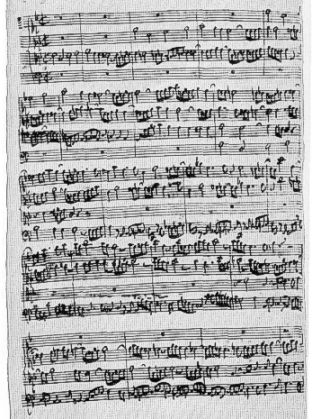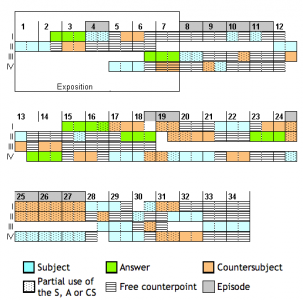Floor van de Velde
My work explores the connection between sound, sculpture, photography and time-based media.
The starting point for my investigation will be the analysis of the fugue, a form of musical composition in which the basic principle is imitative counterpoint of two or more voices. Beginning with J.S. Bach’s “Die Kunst der Fuge, BWV 1080: Contrapunctus 1,” I aim to create a model that could function as a tool to investigate the relationship between the structure of the fugue, Bach’s intentional mathematical strategies within the composition, general music structure, sound, light and motion.

Die Kunst der Fugue, J.S. Bach
Bach wrote “The Art of the Fugue” as “an exploration in depth of the contrapuntal possibilities inherent in a single musical subject.” (Wolff, Christoph) The majority of Bach’s work were commissioned, but “The Art of the Fugue” was one of Bach’s few personal composition projects and therefore of a very different category in terms of their function within his general opus. In composing his organ fugues, Bach made use of a number of formal mathematical patterns: the “golden section”, the Fibonacci succession (1,1,2,3,5,8,13…), etc.
For those with limited experience in reading musical scores, this model might present a way to “follow” and discover the anatomy of a composition in fugue form. Musicians will more than likely recognize various links between the visual information and known musical territory, but might notice new and unexpected ways of visualizing relationships within the fugue.

John Cage – Score for “Fontana Mix”
Numerous musicians, artists and scientists have endeavored to create an analogous link between the auditory and the visual domain with mixed results. Experimentation in this realm continues – a concrete representation of music and/or sound seems to be an impossible puzzle. For this reason, I intend to construct the model so it might have the capability of being modular and adaptive.
With the use of video projection, sound and transferable surfaces, this model could be able to adapt in scale, operation and structure, depending on the outcome of my experiments.
